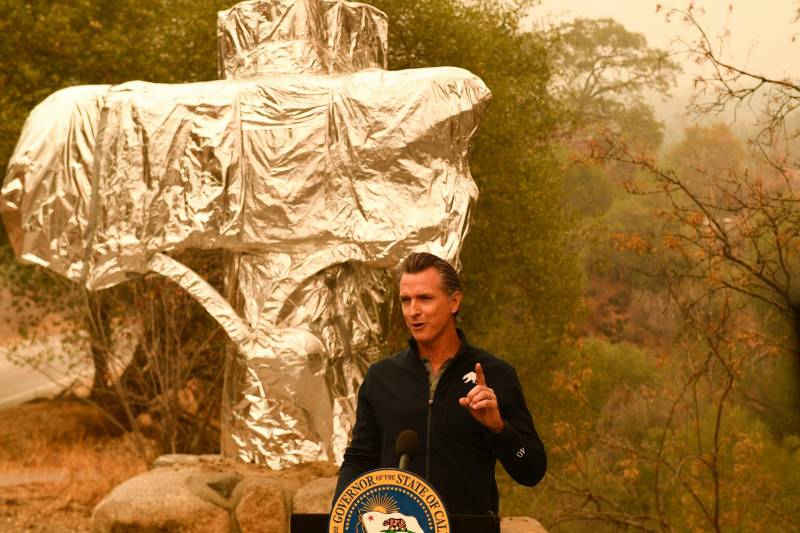About $5.2 billion — roughly a third of the package — will be spent on immediate drought relief and water measures, including money for projects to boost water recycling, reduce flooding risks, and clean up contaminated groundwater.
Earlier this week, state water officials rang alarm bells about a possible third year of drought, warning water providers south of the Sacramento-San Joaquin Delta that they might not receive any allocations next year. Nearly 90% of the state is currently in category of “extreme drought” or worse, according to the latest U.S. Drought Monitor data.
Californians reduced their home water use by less than 2% in July, compared to the same time last year, even after Newsom urged residents to conserve 15%.
As part of the new climate plan, the state will spend $815 million to help secure what little water is left in reservoirs and fund contingency planning initiatives for smaller communities.
Preventing megafires
The plan also earmarks about $1 billion in new spending for fire breaks, tree thinning, and other measures meant to prevent fires from burning out of control.
“We are not going to respond our way out of this wildfire crisis,” said California Natural Resources Secretary Wade Crowfoot during a morning video call with reporters in advance of Newsom’s signing event. “Expanding our upfront, proactive actions is essential to address the wildfire risks we now face.”
That package includes $19 million for the state to work with tribes on prescribed burns, up from just $1 million last year, and training for firefighters. The state also plans to invest in micro-lumber mills and other businesses that reuse old wood from overgrown forests.
Forest thinning is expensive, and the market is slim for the wood that comes from removed trees.
This summer’s Dixie and Caldor fires were the first two wildfires on record to burn over the crest of the Sierra Nevada, a remarkable feat given that forests at high elevations are usually too saturated from heavy winter snow to burn out of control.
Crowfoot commended South Lake Tahoe officials for conducting years of proactive fuel treatments, a move he said that helped save the city of 22,000 people from being consumed by the Caldor Fire.
The climate plan also directs $3.9 billion over the next three years to expand use of electric vehicles in the state, in accordance with Newsom’s mandate that only zero-emission new passenger cars and trucks be sold in California by 2035. That pot includes funding for new consumer rebates, the production of thousands of buses and heavy-duty trucks, and incentives for low-income Californians to trade in their gas cars.
California will also spend $3.7 billion to prepare communities to deal with sea level rise, fund energy-efficient homes, and invest in low-income communities and communities of color, with the goal of improving air quality and reducing heat disparities.
Environmentalists were quick to cheer the state’s latest climate spending plan.
“This decade is really the most consequential for the future of our planet,” said Jason Barbose, a policy manager for the Union of Concerned Scientists. “We need to be spending billions to address climate change. This budget is an important down payment for that.”

